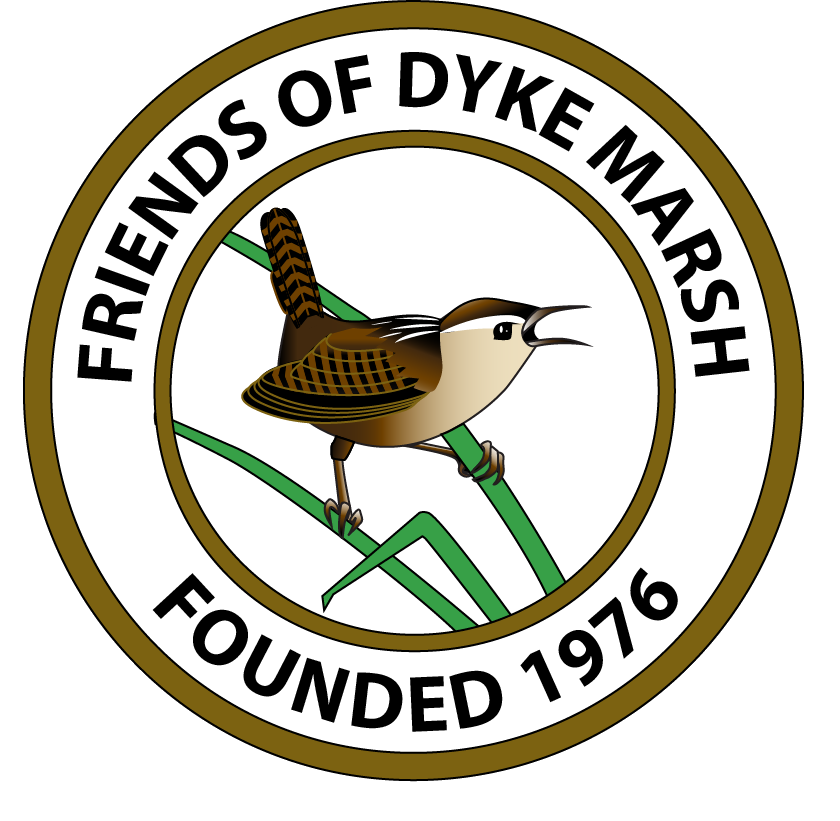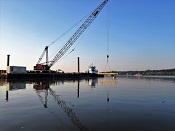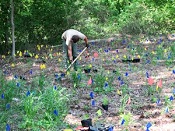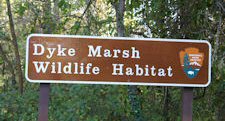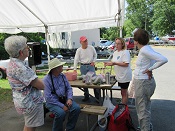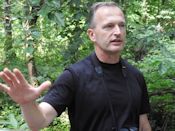Crews operating barges, cranes and boats are at work this fall, 2018, building the breakwater in the Dyke Marsh Wildlife Preserve, the first stage of Dyke Marsh restoration. The U.S. Geological Survey’s 2010 and 2013 studies identified building a breakwater as the first priority of restoration, a riprap structure designed to replicate the historic promontory removed by dredgers.
News
The Mount Vernon Gazette, Connection Newspapers, published an article on our native plant restoration project. You can read it here.
Our partners are the National Park Service, Earth Sangha and the Audubon Society of Northern Virginia. We also appreciate support from the National Environmental Education Foundation and Transurban.
Sign up to help us control invasive plants and make this project a success at
The Mount Vernon Gazette (Connection newspapers) published a front-page article on August 16, 2018, by Jerry Fill on the start of the restoration of Dyke Marsh. You can read the entire article online here.
Several FODMers learned about native and non-native submerged aquatic vegetation (SAV) of Dyke Marsh and the Potomac River on July 14, 2018, when Nancy Rybicki gave a tutorial and led a paddle. Dr. Rybicki is an aquatic plant ecologist and wetlands scientist, retired from the U.S. Geological Survey. In her 37 years of studying the vegetation of the Potomac River, she has correlated the presence of submerged aquatic vegetation with water quality.
On a beautiful, 82-degree, breezy July 7, 2018, 15 FODMers studied butterflies, dragonflies and damselflies and their host plants in the Dyke Marsh Wildlife Preserve and Belle Haven Park.
It was a Needham’s skimmer (Libellula needhami) day. These showy dragonflies were whizzing around everywhere and eating midges, making for easy sightings. The males are bright reddish-orange and have a red face. The females are yellow and black. Both sexes and all ages have a black line on their abdomens and orange-tinted wings.
On June 9, 2018, Dyke Marsh members and friends learned about Potomac River wetland ecosystems and the interrelationships of plants, insects, birds and other biota, on a walk on the Preserve’s Haul Road trail led by Charles Smith, expert naturalist and Chief of Fairfax County’s Stormwater Planning Division, Watershed Projects Implementation Branch. He also discussed human intervention and how native Americans used some of the marsh plants.
